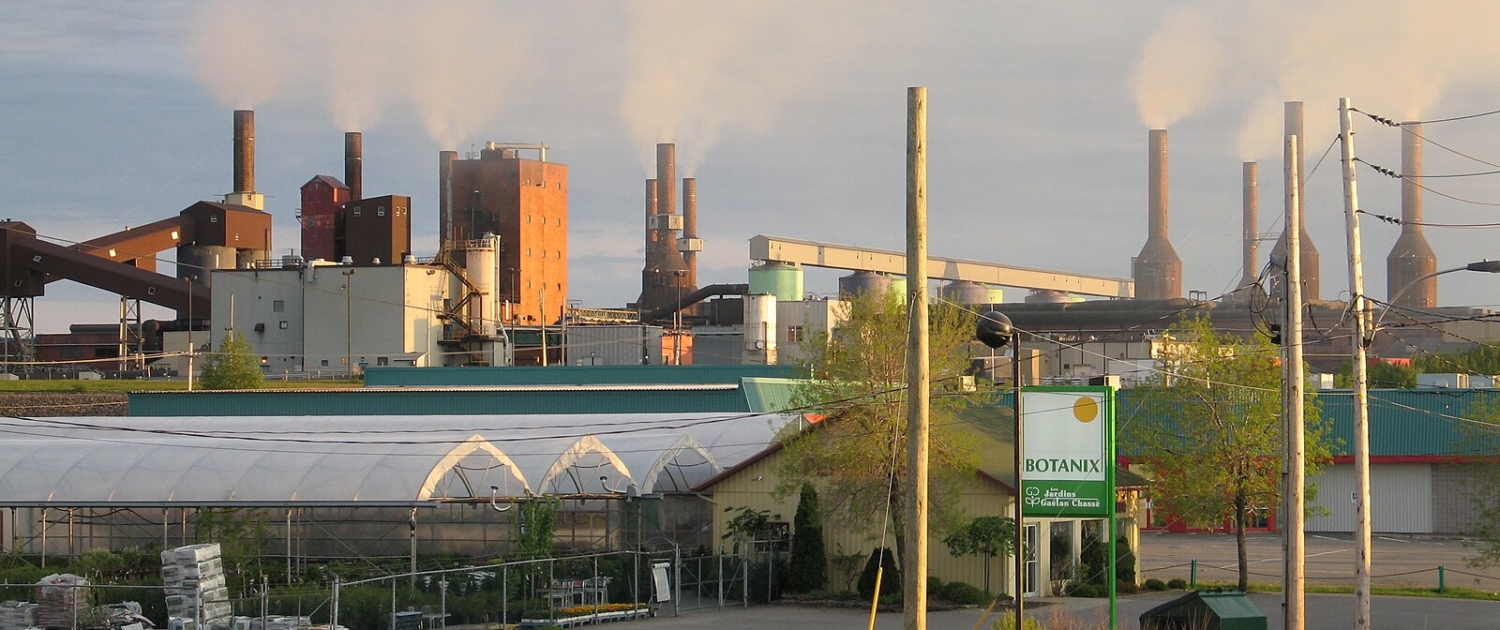By Jacques Desmarais, CHAT
“Over the past two decades (1990-2010), a veritable tsunami of relocations and plant closures has swept across Quebec. More than 200,000 permanent manufacturing jobs have disappeared.”1 Between 1990 and 2012, manufacturing employment fell from 19% to 12.5% of total employment in the economy as a whole. In some sectors, the fall was more pronounced. Between 1987 and 2012, manufacturing’s share of the economy as a whole fell from 18.9% to 12.5%.2
How is Quebec participating in the phenomenon of deindustrialisation in North America and Western Europe? In 2020, the Centre d’histoire et d’archives du travail (CHAT) became a partner of Deindustrialization and the Politics of Our Time (DéPOT). CHAT’s collaboration involves analysing six plant closures in Quebec in the pulp and paper sector (Papiers Gaspésia in Chandler; Domtar in Lebel-sur-Quévillon; Produits forestiers Résolu (PFR) in Shawinigan), textile production (Canadian Celanese in Drummondville), aluminium production (Rio-Tinto in Shawinigan) and shipbuilding (Marine Industries in Sorel-Tracy).
A look at the history of these plant closures reveals the following characteristics:
1) The plant was set up by a baron or a major industrial corporation in an area endowed with impressive and readily available resources (forest, waterways, workforce);
2) a period of growth during the Second World War and the Thirty Glorious Years (1945-1973);
3) a range of difficulties created by foreign competition stimulated by the rise of emerging countries and the vacillation of public authorities with regard to the liberalisation of markets;
4) more or less successful experiments in diversifying production in response to the new environment;
5) contrasting results depending on changes in demand (from newsprint to digital; from natural fibres to synthetic products) and the presence or absence of investment by companies in their production facilities;
6) the arrival of demanding environmental standards;
7) the more or less active and fortunate involvement of governments and their agencies in the development of each plant’s performance.
The description of the closures shows substantial job losses, often well-paid, negative effects on workers’ physical and mental health (physical illness, alcohol and drug abuse, stress and anxiety, depression), impacts on family relationships and local/regional economic decline.
Studies of working conditions in factories and union action, some of which has been fierce, over the years show the following objectives:
1) improving working conditions
2) finding agreements that protect jobs and encourage investment in modernising equipment and production processes;
3) organizing strikes and demonstrations aimed at getting political decision-makers to take action to counteract the negative consequences of closures;
4) negotiating agreements on redundancy (severance pay and employment insurance benefits) and retraining, as well as support services (job search and health advice).
Also described are the actions taken to mobilise communities (citizens, business groups, political and social leaders) to protect jobs, find alternatives to closure, and organise industrial conversion.
In the aftermath of the closure, the challenges of industrial conversion are presented: conditions for creating new jobs; upgrading or building new facilities; diversifying production; integration into the local economy; proactive intervention by political and economic bodies; significant contribution to funding from private and public institutions; community involvement. The studies present the approaches adopted in each case and the results, which may or may not have been satisfactory, depending on the circumstances of each situation.
In conclusion, here is a typical portrait of the evolution of companies built to meet a growing demand for manufactured goods and concentrated on a single product, and established in an area offering optimal conditions (abundance of raw materials and labour, waterways for power supply and transport, proximity to urban centres). After real growth, albeit sustained in different ways, these companies experienced both social and economic conflict and the advent of globalisation and international competition, before finally deciding to relocate and close the plant. The same reasons are given: insufficient productivity and unsatisfactory profitability. Nothing new under the sun! In one case, the determined reaction of the community, which is taking its future into its own hands and putting in place the conditions for conversion through a proactive, planned and coordinated approach; in two others, the failure and success of the revival.




 Tatiana Gomez
Tatiana Gomez Francisco Rivera
Francisco Rivera